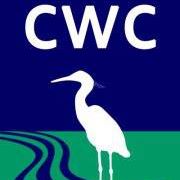18 November 2013 by Gulf of Mexico Research Initiative
“Nothing like real world application to illustrate what a book cannot demonstrate.”—Tiffany Warner, Louisiana State University and CWC
In the early morning hours on Monday July 23rd the Hercules 252 rig blew out, spewing a mixture of gas, condensate, and possibly other hydrocarbons into the water and air. In four days, senior scientists – members of five Gulf of Mexico Research Initiative (GoMRI) consortia – assembled a team and plan, obtained the RV Acadiana, prepped and shipped equipment, traveled to Cocodrie, LA, sailed to the blowout site, and began their work to assess potential impacts.
Five students – Joy Battles (ECOGIG), Nathan Laxague (CARTHE), Conor Smith (CARTHE), Tiffany Warner (CWC), and Sarah Weber (ECOGIG) – suddenly found themselves at the heart of this important mission, and not as sideline players. Their educational and research background and their personal fortitude were put to the test, working as a full-fledged response team to plan and execute this “herculean” data-gathering operation.
The coordinator of this response effort was University of Georgia biogeochemist and microbial ecologist Dr. Samantha Joye, science lead for the Ecosystem Impacts of Oil & Gas Inputs to the Gulf (ECOGIG) consortium. She said that at-sea experience, learning how to plan and stage cruises, is a requirement for oceanography students. However, this was no ordinary field work. “Planning and executing a rapid response cruise is a different animal as time is of the essence and there is no margin for error,” Joye explained, adding, “They were all faced with an incredible challenge yet they achieved remarkable success. I could not be more proud of them.”…..Read more

